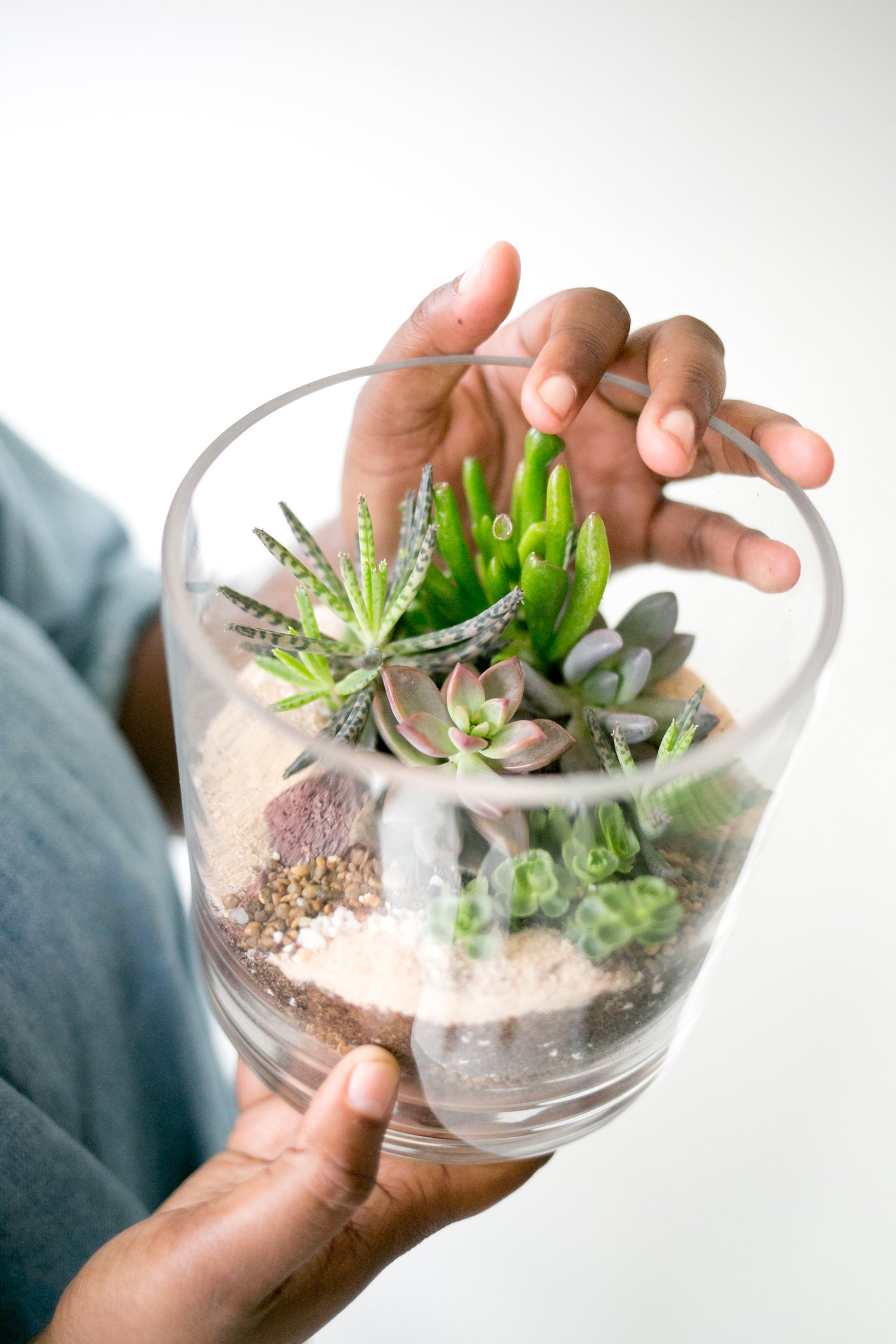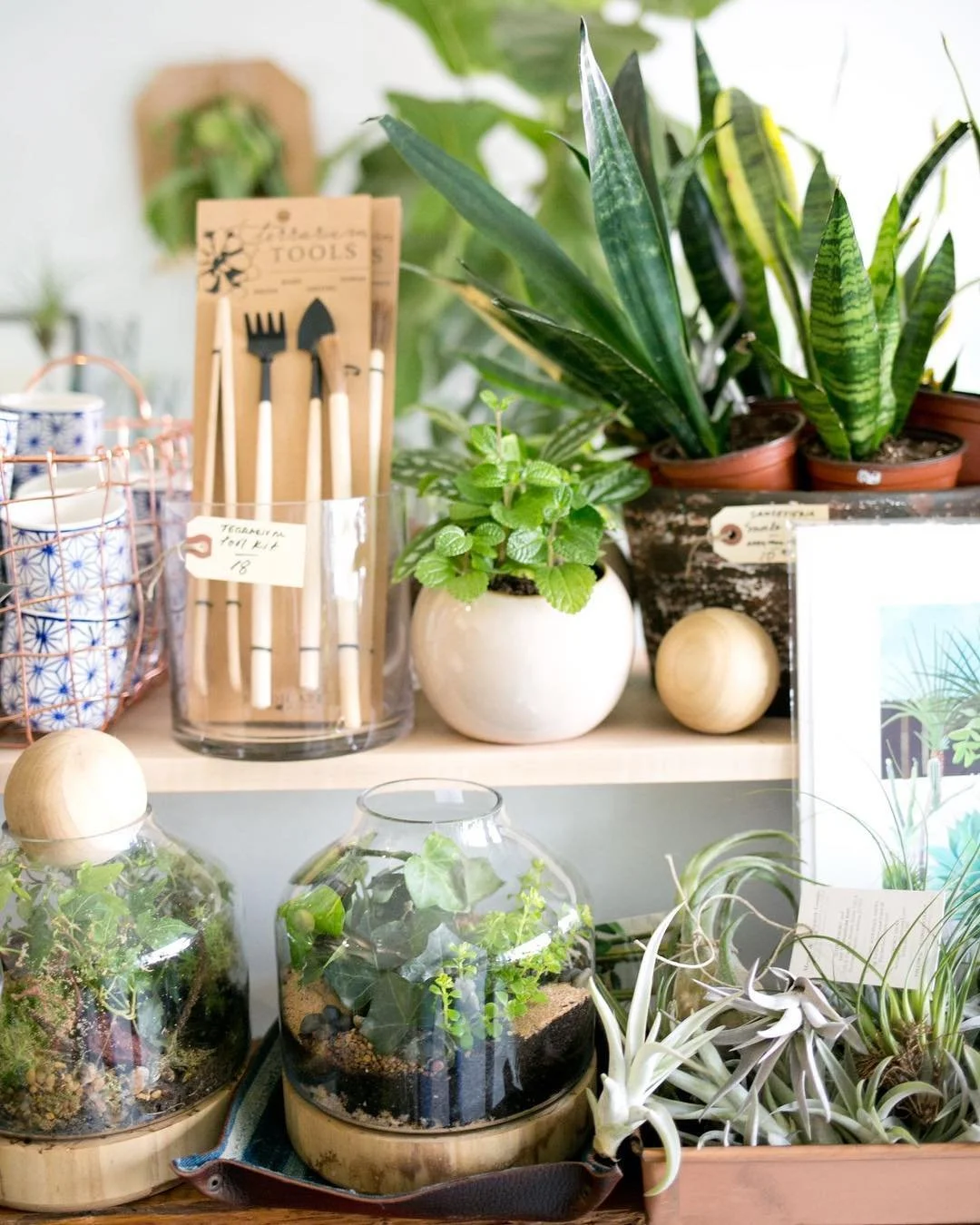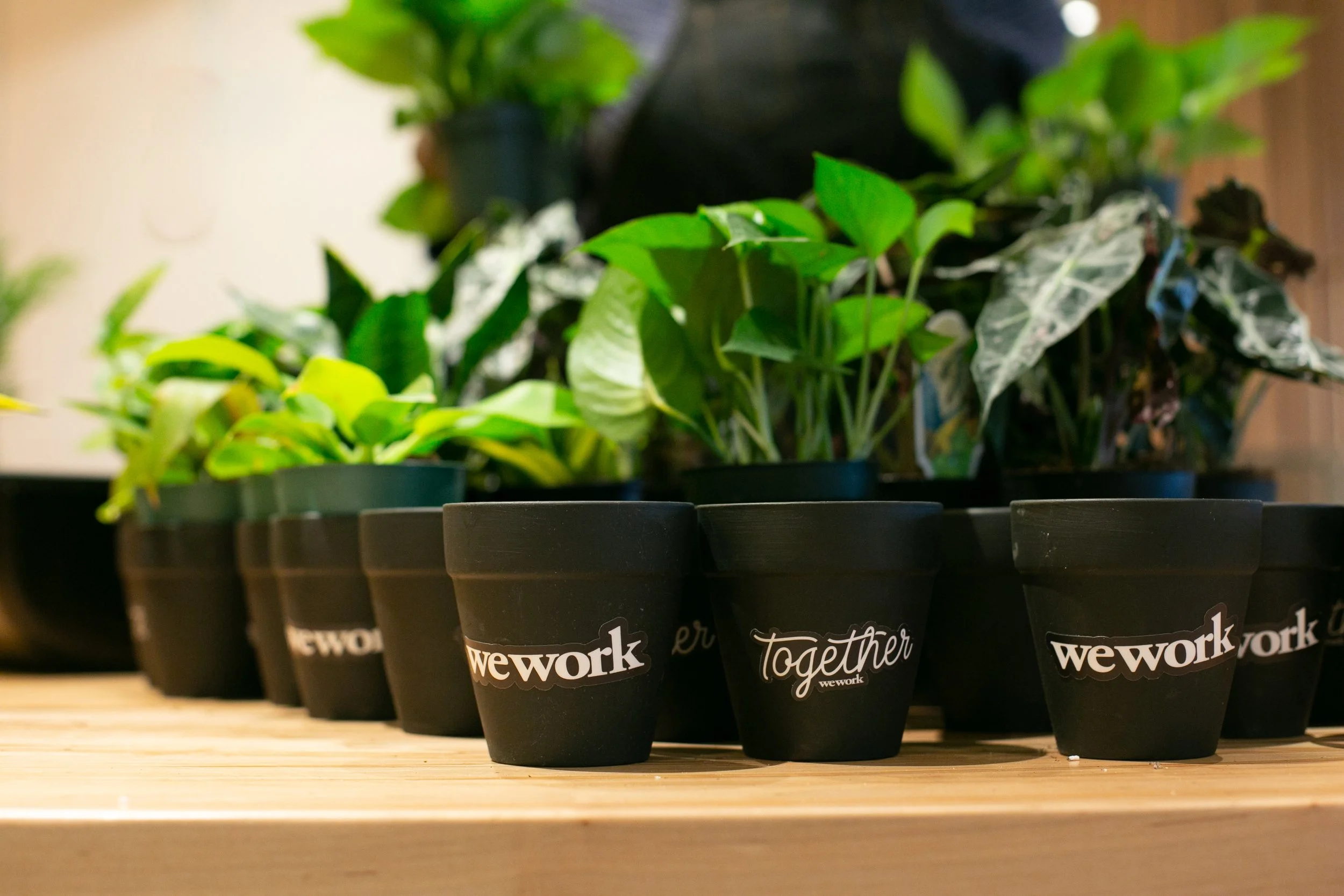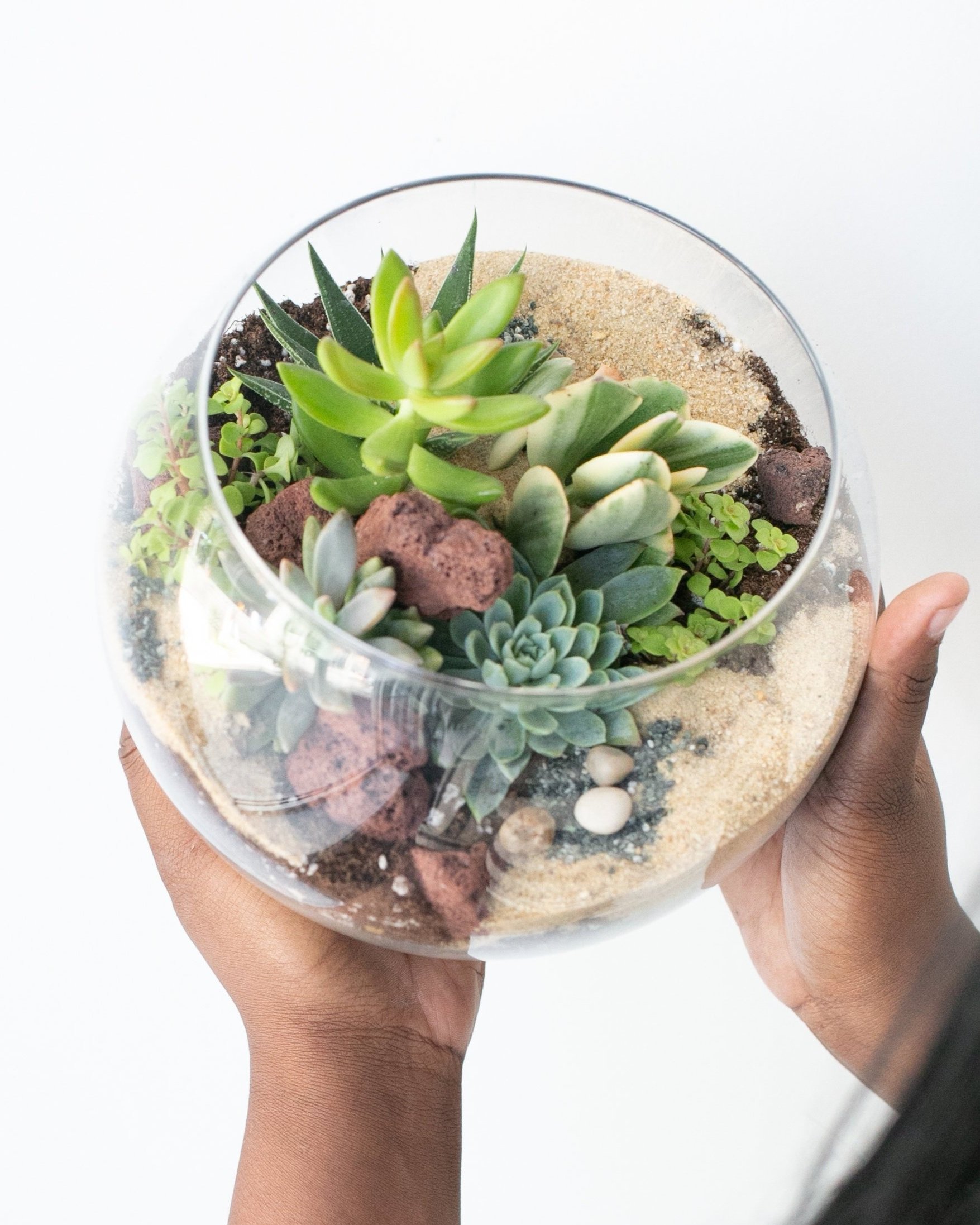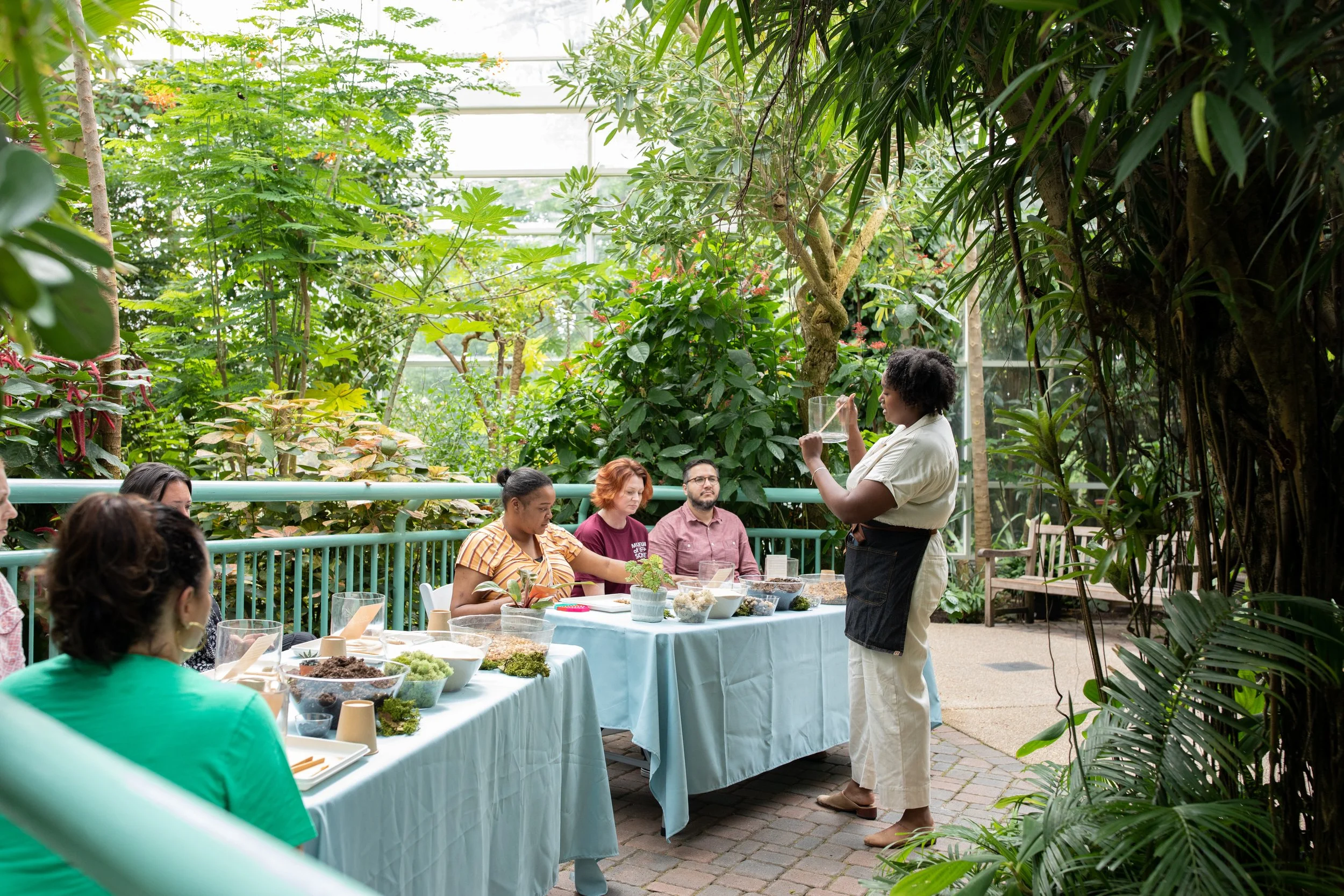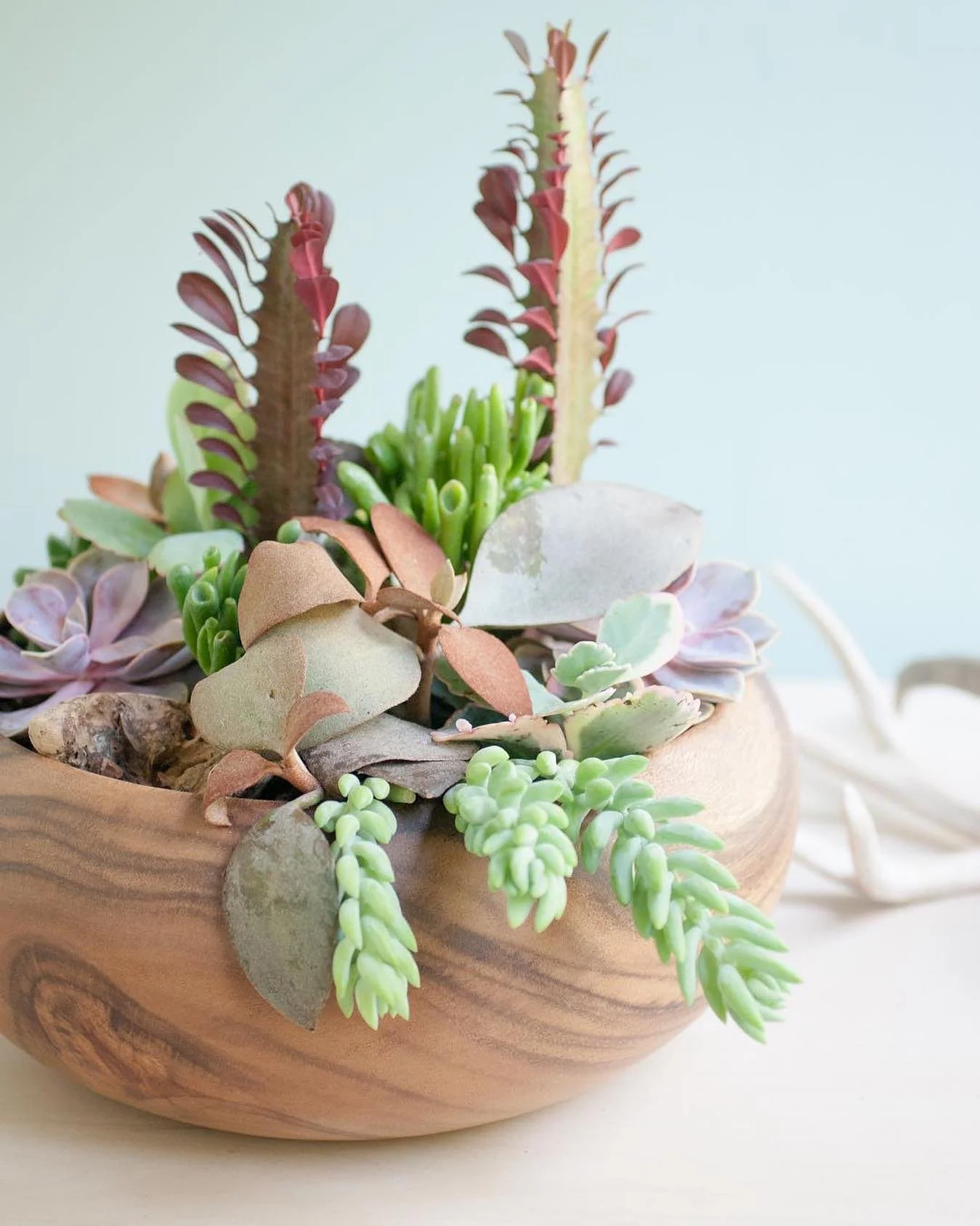Terrariums: Nature's Greatest Mystery
If you know anything about The Zen Succulent, it’s that we bleed terrariums. Whether you call them “tarantulas,” “terraniums,” or just point at a succulent and say you want to make one of those things with them, we’ll be more than happy to drop whatever we’re doing to walk you through the process of terrarium building. A very rewarding process I might add. Ready to try your hand at making one, but not sure where to start? For this week’s edition of From the Potting Shed, we’ll be going over all things terrariums:) let’s get into it.
What is a terrarium?
A terrarium is a closed or partially closed container that houses plants in an artificial environment. Terrariums can be made from a variety of materials, including glass, plastic, and wood. They can be any size, but they are typically small, making them ideal for indoor use.
Types of terrariums
There are two main types of terrariums: open and closed. Open terrariums have a top that allows air to circulate, while closed terrariums are sealed shut. Closed terrariums are more humid than open terrariums, which makes them better suited for plants that require high humidity, such as ferns and orchids.
How to build a terrarium
Building a terrarium is a fun and easy project that can be enjoyed by people of all ages. Here are the basic steps involved:
-Choose a container. The size of the container will depend on the type of plants you plan to grow. For small plants, a jar or bottle will work well. For larger plants, you will need a larger container.
-Add a drainage layer. A drainage layer will help to prevent the soil from becoming waterlogged. You can use gravel, pebbles, or small rocks.
-Add soil. The type of soil you use will depend on the type of plants you plan to grow. For most plants, a well-draining potting mix will work well.
-Add plants. Place the plants in the terrarium and arrange them as desired.
-Add water. Water the plants thoroughly and then mist the inside of the terrarium to create a humid environment.
-Place the terrarium in a location with indirect sunlight. Terrariums do not need a lot of sunlight, so a spot near a window is ideal.
Caring for a terrarium
Once you have built your terrarium, it is important to care for it properly. Here are a few tips:
Water the plants regularly, but do not overwater them.
Mist the inside of the terrarium regularly to maintain a humid environment.
Place the terrarium in a location with indirect sunlight.
Inspect the terrarium for pests and diseases regularly and take action if necessary.
Terrariums are a great way to enjoy indoor gardening and add a touch of nature to your home. They are also a relatively low-maintenance project, making them ideal for beginners. If you are interested in learning more about terrariums, there are many resources available online and at your local library.

